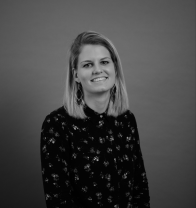What it does
KEA is an intuitive reinvention of a radio remote control for drones, which enables a single person to simultaneously control a drone and its camera. Today creating ambitious areal video recordings is a two person effort and KEA strives to change that.
Your inspiration
The goal scope of this project was to develop a new radio remote control for drones. Especially controllers for drones equipped with a camera aren’t intuitive to handle. Altough model aircrafts and drones have different flight possibilities they are controlled with the same classical radio controllers. These controllers occupy both hands with flying the drone and there is no hand free to control the camera. However maintask of a cameradrone is to film. Therefore KEA focuses on the control of the camera and puts the drone in the rear.
How it works
Flight control and camera control are separated on the two hands. The right hand controls the course of the drone, while the left hand controls the camera. A smartphone is attached to the controller to display the image of the camera and has an interface for an app. A joystick on the front controls the flight in the XY axis and a slide on the back controls the elevation of the drone. The camera is controlled with a joystick similar to a objective behind the smartphone. This joystick is tiltable in all directions. Directly in front of the „objective“ the user sees the chosen image section on the smartphone. The camera on the drone moves simultanously to the tilt direction given by the „objective“. With this shape it feels like reaching into the image when controlling the camera.The shape of KEA resembles a camera on purpose to improve the intuition and precision of the camera control for the photographer.
Design process
We started with a market research, various interviews and test flights with beginners and professionals whereby we defined several requirements for a new drone controller. Drones are used for a variety of applications and each of them has other demands on a controller. Therefore, we created many ideas and concepts for different usecases. Afterwards we decided for one target group - the photographer/videographer. To benefit the photographers workflow, the main concept is to give him a controller which is haptic and visual similar to an SLR camera. To test ergonomics and functional demands foam prototypes were built. Simultaneously a modular button and joystick system was developed to build low tech functional prototypes which were tested in a virtual 3D environment. (picture 4) Conversations and tests with photographers improved our concept. Our final design prototype combines our design with technical boundary conditions. (picture 5) In addition a functional prototype was shown at the bachelor exhibition in Zurich, which allowed visitors to test the controller themselves in a virtual environment.
How it is different
We created a drone controller which enables the user to concentrate mostly on the camera control. By dividing the flight control and the camera control onto two hands it is possible to handle both simultaneously. Because current drone controller already need two thumbs on the joysticks only for flight control, it is nearly impossible to control flight and camera at the same time. KEA merges dynamic flight and the control over the image section in one controller. Therefore it isn't necessary anymore to control difficult maneuver of flight in a team of two. For this reason KEA is more intuitive, efficient and economic. Shifting one joystick to the back of the controller is innovative and simplify the handling of the controller. The design which is similar to a SLR camera achieve a familiar handling for the photographer and is more ergonomic than common drone controller. Because KEA is smaller and more compact than others it can be carried easily during any trip.
Future plans
The project was initiated and collaborated by the Advanced Technology Labs AG, a company in Zurich working in the field of drone software. Our developed prototypes were well received by them and they expressed their interest in developing and manufacturing a controller based on our concept. To bring one joystick to the back of the controller is a unique idea and and improves the handling while reducing its size. Our goal was to extend the possibilities and freedom of flying with aerial camera drones and we’re confident to have laid the foundation for a novel and effective drone controller.
Awards
Nomination Förderpreis Zurich University of the Arts, Bachelor Departement Design



Share this page on
LinkedIn
Facebook
Twitter